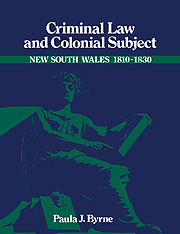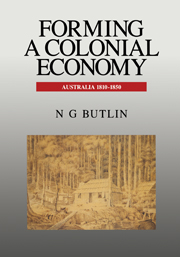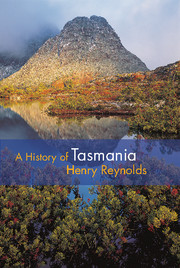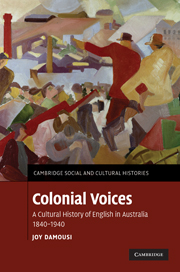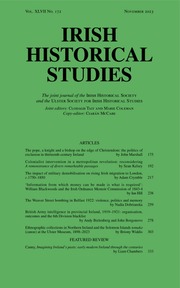Criminal Law and Colonial Subject
£47.99
Part of Studies in Australian History
- Author: Paula Jane Byrne
- Date Published: December 2003
- availability: Available
- format: Paperback
- isbn: 9780521522946
£
47.99
Paperback
Other available formats:
Hardback, eBook
Looking for an inspection copy?
This title is not currently available on inspection
-
1810–1830 was a crucial period in the development of New South Wales, when the legal foundations of a free-settler and emancipist society were laid. This book explores the relationship of a colonial people with English law and looks at the practice of law among the ordinary population. Paula Jane Byrne traces the boundaries between property, sexuality and violence, drawing from court records, dispositions and proceedings. She asks: what did ordinary people understand by guilt, suspicion, evidence and the term 'offence'? The book reconstructs the legal process with great detail and richness and evokes the everyday lives of people in the colony. It focuses on the different valuing of males and females and analyses the complex gender relations of the early colony. This book innovatively ties recent ideas on convict society and Australian colonial women's history to the legal, economic and social history of early New South Wales.
Reviews & endorsements
'Those who seek historical treatment of crime will surely welcome this book, both because it illuminates a little known area of history and because it is based on primary source material.' Nancy Wolfe, The Criminologist
See more reviews'Her methodology and conclusions should interest a broad spectrum of scholars - legal, social, feminist, and economic historians, sociologists, and anthropologists … the book is as much about method as substance. Just as the author's ideas have relevance for studying criminal law, her methodology also has application to other kinds of legal history … Surely an exposé like Byrnes' … merits a new look at legal history methodology …' Albert J. Schmidt, Journal of Social History
'Byrne achieves a remarkable sense of the local gendering of space, geography, housing, and other colonial Australian sites, as well as an often colorful evocation of the theater and conflicts of male/female interactions in streets, inns, households, workplaces, and courtrooms. … The strengths of Byrne's book include the strong grounding of empirical research underlying the readings, analyses, and arguments advanced. … [A]n important, innovative, and, above all, gendered contribution to a cultural history of colonial Australian criminal law.' Judith Allen, American Historical Review
'The historian of crime can draw on this work for useful information and some insightful analysis.' Social History
Customer reviews
Not yet reviewed
Be the first to review
Review was not posted due to profanity
×Product details
- Date Published: December 2003
- format: Paperback
- isbn: 9780521522946
- length: 316 pages
- dimensions: 246 x 189 x 17 mm
- weight: 0.57kg
- contains: 16 b/w illus. 31 tables
- availability: Available
Table of Contents
Author's note
Acknowledgements
Abbreviations
List of figures
List of tables
1. Introduction
Part I. Law and the Person:
2. Labour
3. The house
4. The body
Part II. Offence in the Wilderness:
5. The creation of bushranging
Part III. Suspicious Characters: Police and People:
6. The structure and style of policing
7. Popular use of law
Part IV. The Court Room:
8. Deciding what was good and bad
9. Conclusion
Appendix
Bibliography
Index.
Sorry, this resource is locked
Please register or sign in to request access. If you are having problems accessing these resources please email [email protected]
Register Sign in» Proceed
You are now leaving the Cambridge University Press website. Your eBook purchase and download will be completed by our partner www.ebooks.com. Please see the permission section of the www.ebooks.com catalogue page for details of the print & copy limits on our eBooks.
Continue ×Are you sure you want to delete your account?
This cannot be undone.
Thank you for your feedback which will help us improve our service.
If you requested a response, we will make sure to get back to you shortly.
×
